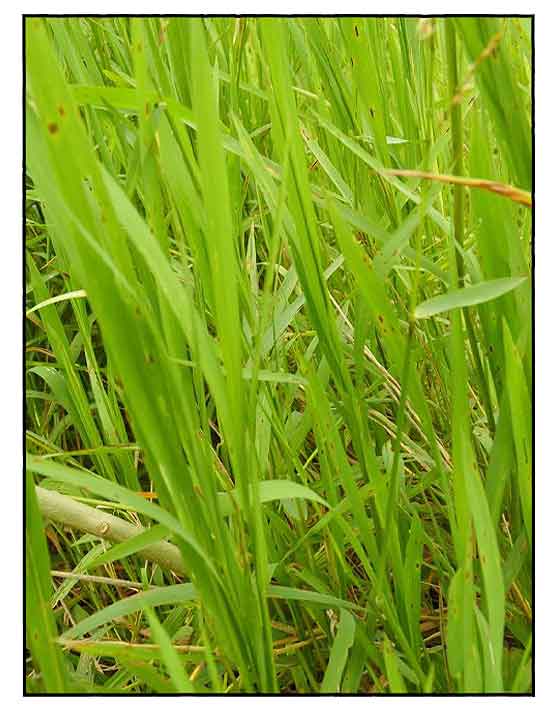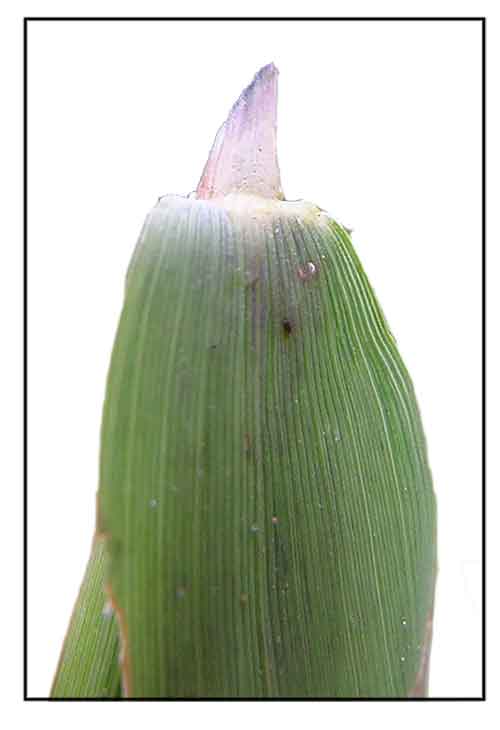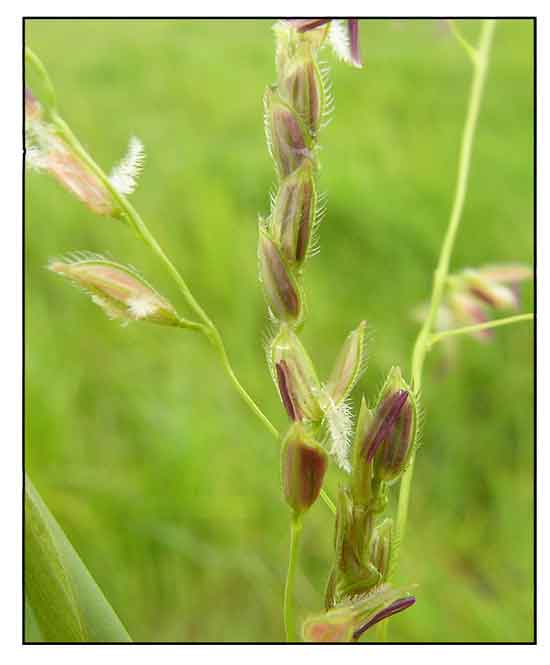
Family • Poaceae
Barit
Leersia hexandra Sw.
SWAMP RICE GRASS / CLUBHEAD CUTGRASS
Li shi he
| Scientific names | Common names |
| Asprella australis (R.Br.) Roem. & Schult. | Barit (Tagalog) |
| Asprella brasiliensis (Spreng.) Schult. | Clubhead cutgrass (Engl.) |
| Asprella hexandra (Sw.) P.Beauv. | Cutgrass (Engl.) |
| Asprella mexicana (Kunth) Roem. & Schult. | Rice grass (Engl.) |
| Asprella purpurea Bojer | Swamp rice grass (Engl.) |
| Blepharochloa ciliata Endl. | Southern cutgrass (Engl.) |
| Homalocenchrus gouinii (E.Fourn.) Kuntze | |
| Homalocenchrus hexander (Sw.) Kuntze | |
| Hygroryza ciliata (Retz.) Steud. | |
| Leersia abyssinica Hochst. ex A.Rich. | |
| Leersia aegyptiaca Fig. & De Not. | |
| Leersia australis R.Br. | |
| Leersia brasiliensis Spreng. | |
| Leersia capensis Müll.Hal. | |
| Leersia ciliaris Griff. | |
| Leersia ciliata (Retz.) Roxb. | |
| Leersia compressa A.Chev.. | |
| Leersia contracta Nees | |
| Leersia dubia F.Aresch. | |
| Leersia elongata Willd. ex Trin. | |
| Leersia ferox Fig. & De Not. | |
| Leersia glaberrima Trin. | |
| Leersia gouinii E.Fourn. | |
| Leersia gracilis Willd. ex Trin. | |
| Leersia graffithiana Müll.Hal. | |
| Leersia hexandra Sw.. | |
| Leersia luzonensis J.Presl | |
| Leersia mauritanica Salzm. ex Trin. | |
| Leersia mauritiaca Salzm. ex Trin. | |
| Leersia mexicana Kunth | |
| Leersia parviflora Desv. | |
| Leersia triniana Sieber ex Trin. | |
| Oryza australis R.Br. ex Schweinf. | |
| Oryza hexandra (Sw.) Döll | |
| Oryza mexicana (Kunth) Döll | |
| Pharus ciliatus Retz | |
| Pseudoryza ciliata (Retz.) Griff. | |
| Zizania ciliata (Retz.) Spreng. | |
| Salacca zalacca (Gaertn.) Voss is an accepted name. KEW: Plants of the World Online | |
| Other vernacular names |
| BRAZIL: Andrequice, Arroz bravo, Arroz-de-Guiana, Capim-marreca, Grama-boiadeira, Grama-de-brejo. |
| CHINESE: Li shi he. |
| CREOLE GUYANE: Herbe a ble. |
| FRENCH: Herbe rasoir. |
| INDONESIAN: Rumput darat, Rumpuik banto, Kalamenta. |
| JAPANESE: Taiwanashikaki. |
| MALGACHE: Hosy hosy, Vilona, Tsingirifotse, Tsiriry, Ahikongona, Ahitsiriry. |
| NIGERIA: Yaudeho, Madariki, Abeko. |
| SENEGAL: Mutut, Kameteo. |
| SPANISH: Arrocillo, Arrocillo rosado, Lambedora, Lamedora, Arroz bravo, Hierba de arroz, Pasto de agua. |
| THAILAND: Yaa sai. |
October 2023
![]()
 |
| PHOTOS / ILLUSTRATIONS |
| IMAGE SOURCE: Leersia hexandra Sw. / Thhomas Le Bourgeois / CC BY-SA 2.0 Generic / click on image or link to go to source page / image modified / Wikimedia Commons |
| OTHER IMAGE SOURCE: Leersia hexandra ligule / © Harry Rose / Non-commercial use / click on image or link to go to source page / Wiktrop |
| OTHER IMAGE SOURCE: Leersia hexandra / Macleay Grass Man / Non-commercial use / CC Attribution 2.0 Generic / click on image or link to go to source page / Wikipedia |
Additional
Sources and Suggested Readings |
• |
DOI: It is not uncommon for links on studies/sources to change. Copying and pasting the information on the search window or using the DOI (if available) will often redirect to the new link page. (Citing and Using a (DOI) Digital Object Identifier) |
| List of Understudied Philippine Medicinal Plants |
| New plant names needed The compilation now numbers over 1,300 medicinal plants. While I believe there are hundreds more that can be added to the collection, they are becoming more difficult to find. If you have a plant to suggest for inclusion, please email the info: local plant name (if known), any known folkloric medicinal use, scientific name (most helpful), and, if possible, a photo. Your help will be greatly appreciated. |
• |
 |




